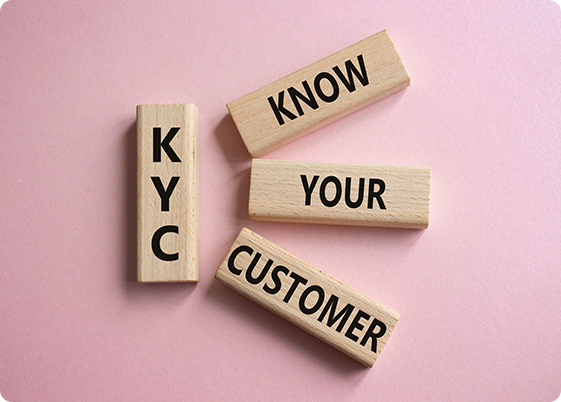
A well-defined customer experience management strategy (CXM) is no longer a luxury—it’s a necessity. In an era of soaring customer expectations, companies that fail to prioritise experience risk being surpassed by more customer-centric competitors.
Customer Experience Management (CXM) isn’t just about delighting customers; it’s about crafting intentional, consistent, measurable interactions that foster loyalty and long-term growth.
In this blog, we'll define customer experience management, review its components, and give you a simple guide to creating a successful strategy.
What is Customer Experience Management?
Customer Experience Management (CXM) refers to the intentional design and orchestration of a customer's interactions with your brand at every touchpoint from awareness through advocacy.
CXM aims to exceed expectations, build emotional connections, and turn satisfied customers into brand ambassadors.
But what is customer experience management in practical terms? It's how a bank ensures a customer receives streamlined service on the web and in the branch.
It's how a healthcare provider practices empathetic communication while keeping track of appointments and follow-ups. It's how a call centre reduces wait times and provides customised assistance.
In our comprehensive analysis, you can delve deeper into this idea: What is Customer Experience Management?
Key Components of a Customer Experience Management Strategy
A successful customer experience strategy is founded on several key elements:

Customer Research and Persona Development
First, before you can create an excellent experience, you need to know who your customers are. Leverage demographic information, behavioural data, and psychographic segmentation to craft detailed customer personas.
These personas should include age, income, goals, challenges, and expectations. For instance, a digitally savvy millennial will expect digital self-service, whereas an older customer might appreciate human interaction more.
This core knowledge informs all other aspects of your CXM approach.
Customer Journey Mapping
Customer journey mapping enables you to visualise your customers' end-to-end experience, from their initial discovery of your brand to their becoming loyal ambassadors.
Mapping includes:
- Key steps: awareness, consideration, purchasing, retention, advocacy
- Touchpoints: website, app, call centre, email, retail stores
- Emotions: How do customers feel at each touchpoint?
Analysing these experiences allows you to identify friction points and areas for enhanced satisfaction.
Discover more on this subject in our related blog: Call Centre KPIs for Customer Success.

Setting Clear Objectives and KPIs
A robust strategy must be measurable. Determining KPIs (Key Performance Indicators) allows you to measure success and constantly optimise your efforts.
Typical CXM KPIs are:
- Customer Satisfaction Score (CSAT)
- Net Promoter Score (NPS)
- Customer Effort Score (CES)
- First Contact Resolution (FCR)
These KPIs help evaluate the overall quality of your CX strategy and service delivery effectiveness.
Personalisation and Customisation
Today's customers want brands to provide experiences uniquely customised to their preferences, behaviour, and previous interactions. From product recommendations and targeted email campaigns to personalised content, these experiences engage customers. Customers who feel a brand is relevant are more likely to return, leading to significantly higher conversion rates. Finally, personalisation deepens customer relationships and creates long-term loyalty, making it a key component of any successful customer experience management program.
Examples:
- Dynamic website content based on user history or location
- Personalised messages and emails
- AI-based product recommendations
Remember that personalisation must go beyond marketing and be reflected in customer support, billing, onboarding, and follow-up tactics.
Step-by-Step Guide to Building a Customer Experience Management Strategy
Here's a comprehensive 9-step guide to creating a CXM strategy that resonates and achieves results.

Step 1: Know Your Customers
Begin by collecting data. You can gather information through customer surveys, Net Promoter Score (NPS) comments, customer service transcripts, and web analytics.
The more you know about your customers' pain points, goals, and motivations, the more you can cater to them.
Example: A telephone company may discover that lengthy wait times and confusing billing formats are the key friction points, and deal with them beforehand.
Step 2: Map the Customer Journey
With personas established, map out how each one engages with your brand at each journey stage.
Ask:
- What channels do they use?
- What obstacles do they encounter?
- What motivates them to move to the next stage?
When these routes are sorted out, you can create easy and enjoyable experiences that keep people happy and returning.
Step 3: Set Clear Goals and KPIs
Ensure that your customer experience strategy aligns with your business objectives. Whether you want to reduce churn, increase repeat purchases, or make onboarding easier, define them clearly and set SMART (Specific, Measurable, Achievable, Relevant, Timely) goals.
Define your goals, monitor performance consistently, and use dashboards and analytics to track progress and adjust accordingly.
Step 4: Personalise the Experience
Leverage customer information to provide hyper-relevant experiences. For instance:
- Customised product suggestions on online shopping websites
- Targeted advertising based on browsing history
- Content based on a user's purchase behaviour or interests
Personalisation has a measurable impact; companies using advanced personalisation strategies see up to 20% higher customer satisfaction.
Step 5: Train Your Employees
Having well-trained employees is key to providing a great customer experience. Investment in soft skills training, role-play situations, and programs that build empathy for customers can help.
Encourage frontline staff to delight customers with small, personalised touches. Ready to make an impact? Explore customer service jobs.
Step 6: Leverage Technology and Automation
Modern CX depends on digital solutions. Some of these are must-haves:
- RM platforms with a 360-degree view of the customer
- Chatbots for real-time assistance
- Omnichannel engagement tools
- Feedback and review management software
Automation reduces inconsistency and improves responsiveness—two critical elements of an excellent customer experience.

Step 7: Gather and Act on Customer Feedback
Customer feedback is the most direct and valuable indicator of experience quality. Build feedback loops across channels- surveys, reviews, social listening, etc., and take action on them with visibility.
Customer feedback is one of the most direct indicators of experience quality.
Step 8: Measure and Optimise
Customer experience is an evolving process. Check in on those KPIs and go over customer journeys often. Test different touchpoints to see what clicks.
Pro Tip: Balance quantitative data (numbers) with qualitative data (customers' words) for a complete picture.
Step 9: Foster Customer Loyalty and Advocacy
Retention costs less than acquisition. Treat loyal customers with special privileges, referral incentives, early feature releases, and customer appreciation.
Encourage happy customers to post reviews, share testimonials, or tell friends. Natural word-of-mouth fosters brand credibility and expansion.
Conclusion
A practical customer experience management approach is not a one-size-fits-all strategy. It involves a thorough understanding of your customers, a relentless pursuit of improvement, and a culture driven by empathy and innovation.
Firms that invest in CXM strategies are better placed to create memorable experiences, enhance loyalty, and outcompete their peers. With changing customer expectations, CXM initiatives must evolve accordingly.
Take the first step today—chart your path, engage your team, and create experiences that resonate and build lasting impressions. Whether you’re building a global CX strategy or delivering localised service excellence in Jamaica, understanding your customers is essential.
At HGS Jamaica, we help organisations design and deliver customer experiences that drive loyalty, efficiency, and long-term success. With deep expertise in CXM strategy, we support businesses across industries in building stronger customer relationships.
For more practical tips and real-life examples, visit our CX insights blog.
Frequently Asked Questions (FAQs)
Why have a customer experience strategy?
When customers have a positive experience, they remain loyal, spend more, and refer others, boosting revenue and reducing acquisition costs.
How to calculate customer experience?
You can track metrics such as CSAT, NPS, CES, and FCR to evaluate how customers perceive and interact with your brand.
How does customer experience impact sales?
Customers who enjoy positive experiences are likely to stay loyal, make repeat purchases, and refer others, boosting sales and reducing acquisition costs.
Why does every company need customer experience management?
All companies must prioritise customer experience management (CXM), as customers need customised and seamless experiences today. CXM addresses these needs and turns satisfied customers into loyal advocates.
 Jamaica
Jamaica Canada
Canada Colombia
Colombia India
India Philippines
Philippines UK
UK US
US SA
SA



